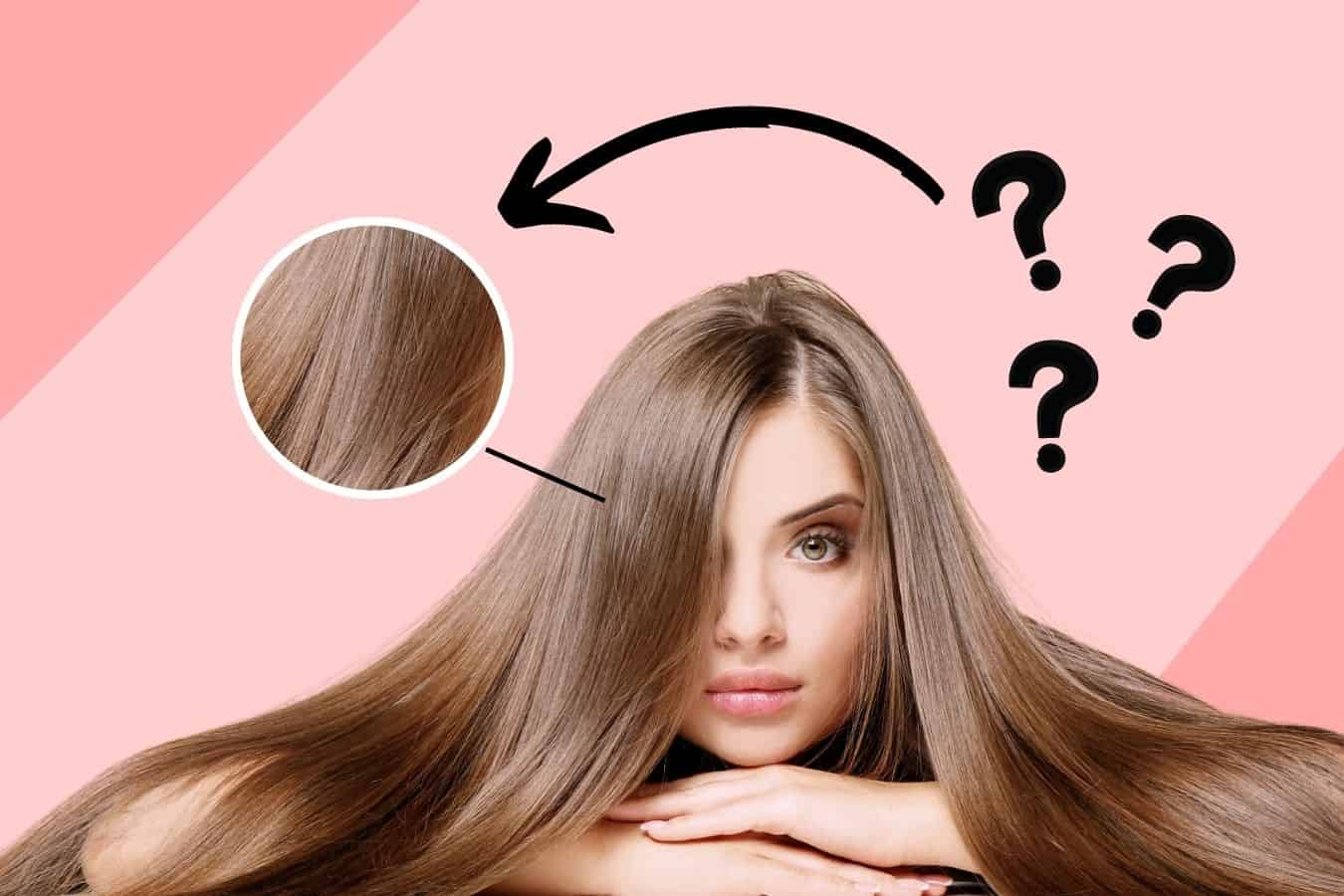It’s important to understand hair elasticity because this characteristic will help you determine how best to take care of your hair. Read on to find out what hair elasticity means.

Hair elasticity means your hair’s ability to stretch without losing its original shape. It’s a measure of your hair’s health and protein/moisture balance. High hair elasticity makes styling easier and gives shine and bounce. Testing hair elasticity involves stretching a wet hair strand to see if it returns to its normal state.
What Is Hair Elasticity?
Simply put, elasticity is your hair’s ability to stretch and bounce back to its usual shape, the way a rubber band does.
This implies your hair has natural stretch, which comes from the moisture contained in the inner layers of each hair shaft.
Moisturized hair is more flexible and robust. The more water your hair has, the more elastic it becomes.
The cuticle is the outer layer responsible for locking in moisture and maintaining hair elasticity. If the overlapping cuticles open, the hair becomes dry and loses elasticity.
This can be reversed, but sometimes hair elasticity is a matter of genetics.
Based on research, there’s a gene that’s responsible for making keratin protein that gives hair its strength and elasticity.
The keratin protein is found in the inner layer of the hair shaft, known as the cortex, and makes hair stronger and more resilient against environmental and physical stresses.
That means some people have hair that’s naturally more elastic than others.
Similarly, hair elasticity also depends on hair density or the diameter of each hair strand. Thicker hair has more elasticity compared to thinner or finer hair.
Also Read: The Best Non-Toxic Hair Smoothing Treatments
Hair Elasticity Test

The hair elasticity test determines if you have low, balanced, or high hair elasticity. Follow these simple steps to obtain your own results:
- Take one single strand of hair and spray water on it. Wet hair gives you better results because it stretches more due to the increased moisture.
- Pull the hair so that it stretches slowly. Keep in mind that dry hair can stretch up to 1.3 times its length, while wet hair can stretch up to 1.5 times its length. This should give you an idea of how far your hair can stretch before it snaps.
- Observe what happens when your hair is stretched and pulled.
Hair Elasticity Test Result
- Low elasticity. Hair with low elasticity snaps easily when stretched.
- Balanced. When your hair has medium elasticity, it yields to stretching and bounces back to its original shape. However, it can also break when stretched too far. Most people have hair with medium elasticity, which tends to have the right amount of protein and moisture in the inner cortex. Having balanced hair elasticity means your locks are strong, easier to style, shiny, and bouncy.
- High elasticity. Hair with high elasticity can stretch further without breaking. However, it doesn’t bounce back properly.
Signs Your Hair Has Low Elasticity

The best way to find if your hair has low elasticity is by performing the hair elasticity test.
Low hair elasticity means the strand doesn’t stretch but quickly breaks. More signs of low elasticity include the following:
- Brittleness. As mentioned, when your hair doesn’t have enough moisture, it loses elasticity and is prone to breakage.
- Dullness. Dry hair also loses its shine and will look dull.
- Rough texture. When the cuticles lift, it’s easier for hair to lose moisture and elasticity. The raised cuticles also give hair a rough texture.
- Difficult to style. Since the hair doesn’t stretch, it’s not as pliable.
Overall, low hair elasticity is due to too much protein and not enough moisture in the cortex of hair strands.
How Best To Care For Low Elasticity Hair
Use the following tips to manage low elasticity hair and improve its flexibility:
- Deep condition regularly. Low elasticity hair craves moisture, so deep conditioning will regularly allow more water to penetrate the deeper layers of the hair shaft. You can also use a leave-in conditioner to protect your hair from everyday stress.
- Avoid high temperature and chemical treatments. Low elasticity hair is already prone to breakage, so chemical treatments and excessive use of heat styling tools will further weaken it.
- Use a honey mask. Honey is an emollient, meaning it can deeply moisturize hair strands, restoring elasticity and strength.
- Do an apple cider vinegar rinse. Dilute a few tablespoons of apple cider vinegar with water and apply after shampooing and conditioning to flatten and close the hair cuticle.
Signs Your Hair Has High Elasticity

Based on the hair elasticity test, if your hair has high elasticity, it stretches too much but fails to return to its original shape.
This often happens because of too much moisture and not enough protein. While high elasticity sounds good, too much elasticity can lead to problems such as:
- Poor curl retention. High elasticity has poor curl retention. The curls tend to be too loose, and the hair does not bounce back to its natural shape.
- Breakage. A lack of protein causes hair to become too stretchy and break easily.
- Gummy hair. When your hair is too stretchy, it will feel gummy. Bleaching is one of the culprits behind gummy and matted strands.
How Best To Care For High Elasticity Hair
High elasticity hair is easier to care for than hair with low elasticity.
- Protein treatments. Since stretchy hair lacks protein, a protein treatment is usually all that’s needed to give your hair normal elasticity. It also helps to use a protein conditioner or a reconstruction conditioner to infuse the hair shaft with protein and repair damage from within.
- Don’t sleep with wet hair. Wet hair is more fragile and more stretchy, so sleeping with damp hair can damage it.
- Comb gently. Brushing hair aggressively, especially when it’s wet, will stretch it beyond its yield strength, leading to more damage.
Disclaimer: This site is not intended to provide professional or medical advice. All of the content on LovedByCurls.com is for informational purposes only. All advice should be followed at your own discretion. Ingredients may change at any time so always check the product label before using. Check our full disclaimer policy here.
